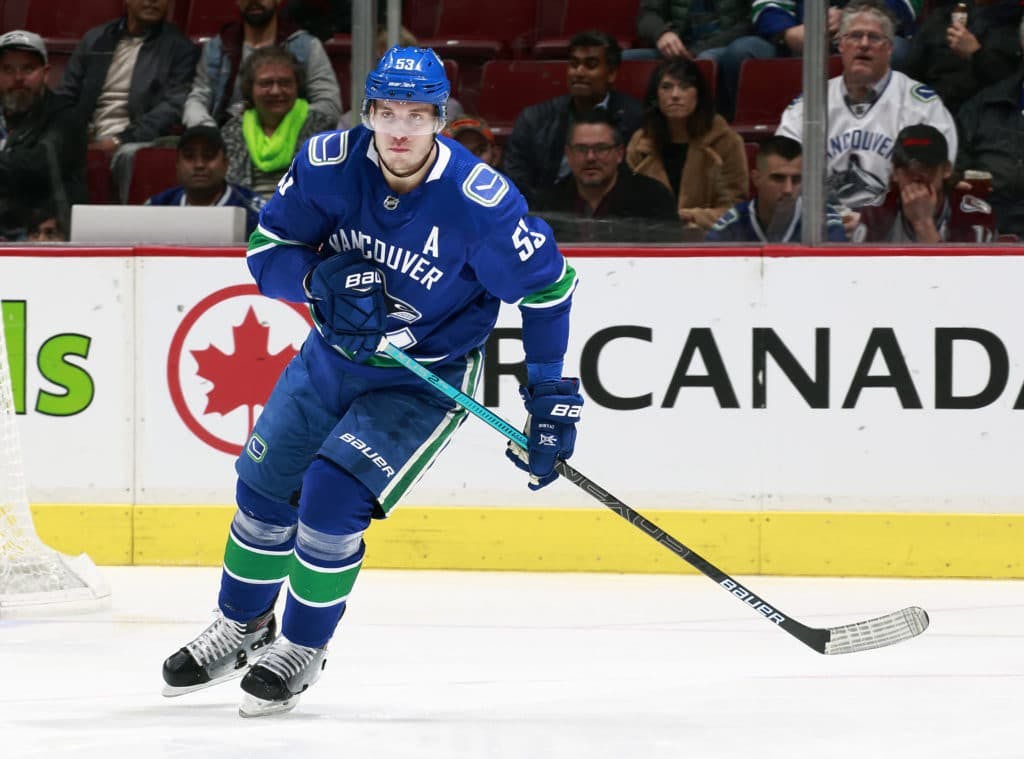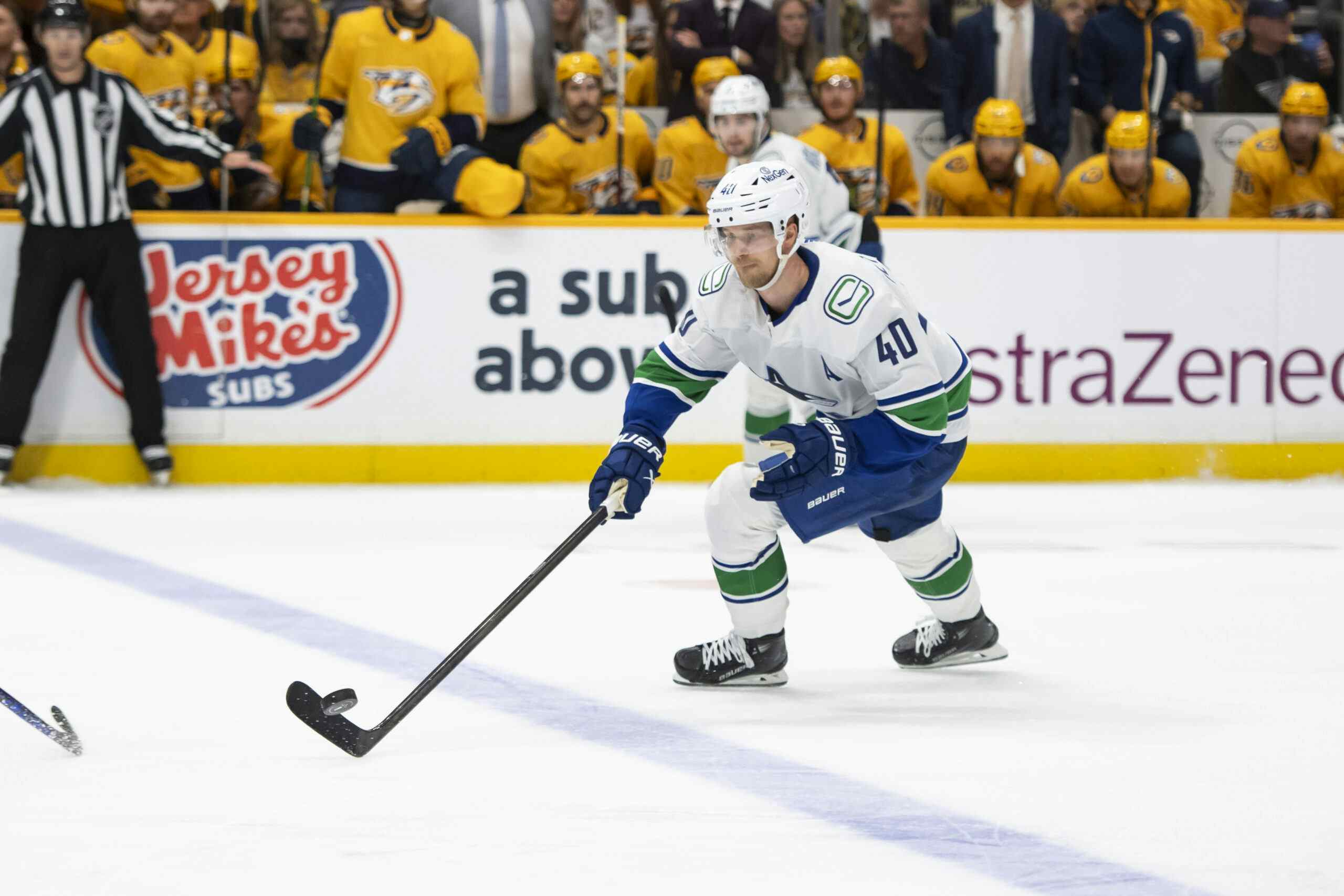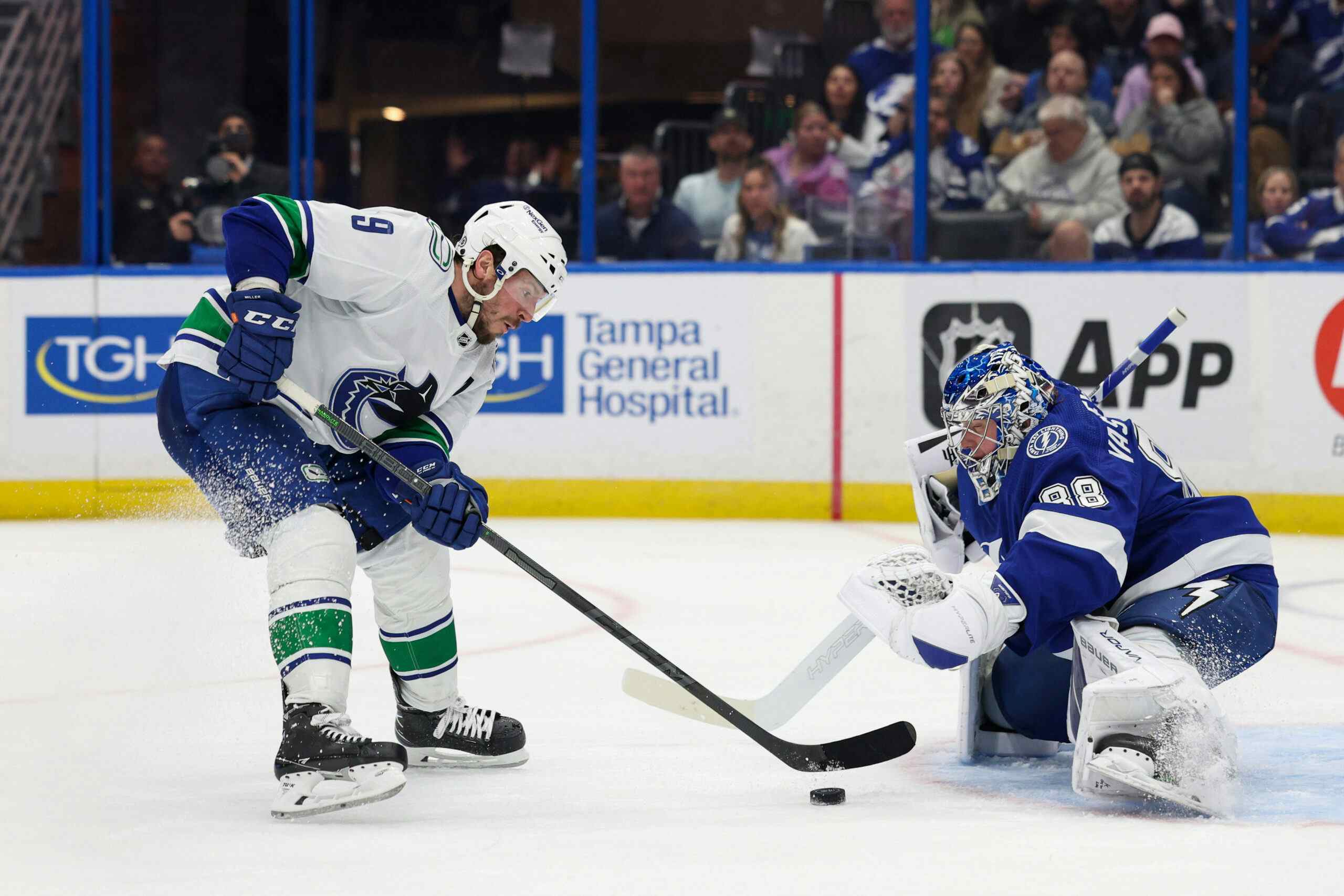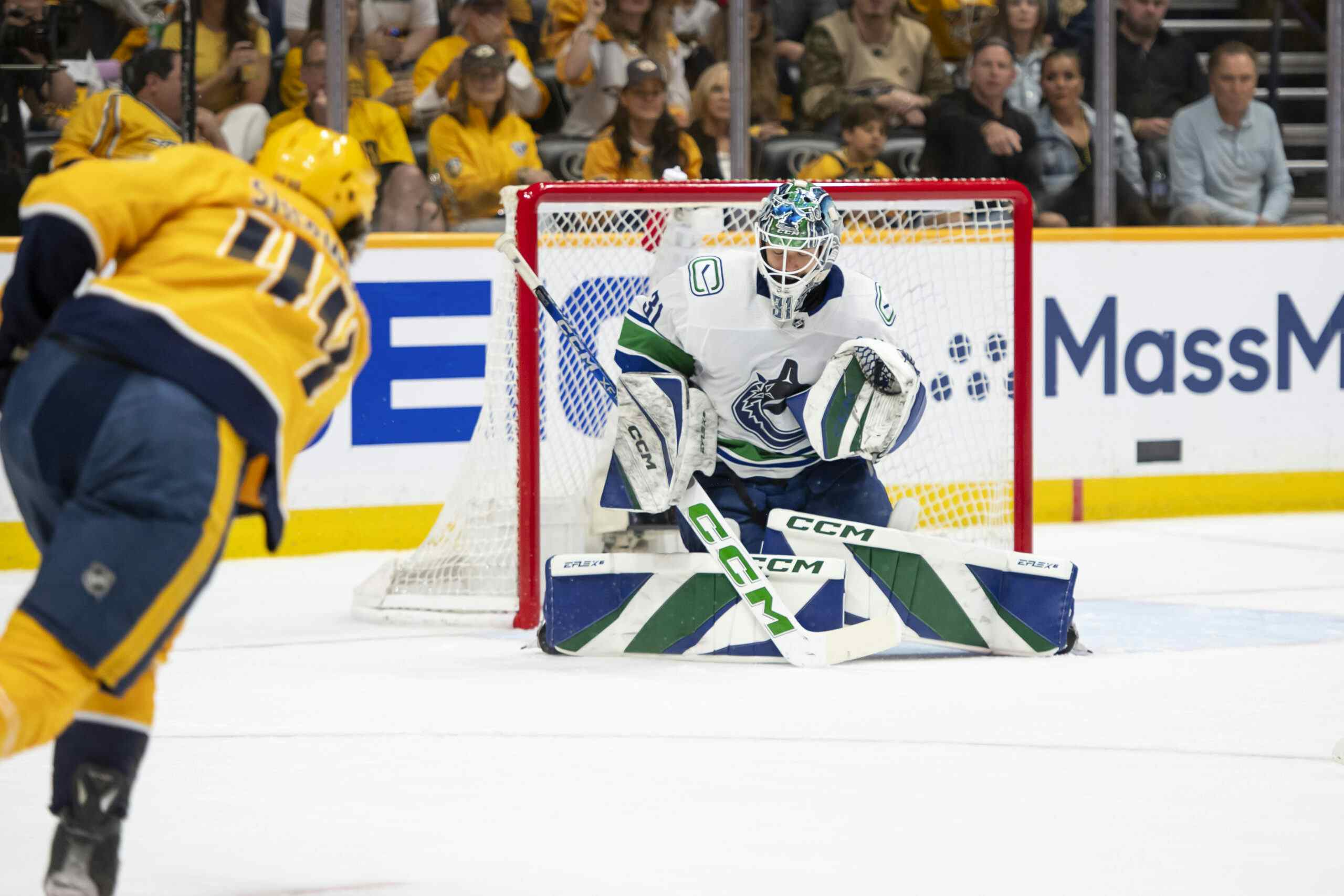Bo Horvat: Where Does He Rank Leaguewide And Where Does He Fit On A Contender

As the 2019/20 season slowly drifts closer, fans of the Vancouver Canucks can take solace in the fact that the core of a future contender is also slowly drifting into place.
GM Jim Benning has assembled a collection of young players that have already taken their place in the franchise’s core—with the hopes that they will lift the Canucks to new heights in years to come. Elias Pettersson looks like a lock for a long career as a #1 center, and Brock Boeser seems poised to ride shotgun with him on the top-line for the foreseeable future. Quinn Hughes stands as perhaps the best defensive prospect the team has ever had, and Troy Stecher looks to be the kind of top-four defender that exists on the periphery of the core. Thatcher Demko is the heir apparent in net, though Michael DiPietro might challenge that before all is said and done.
There’s one core piece, however, that Benning did not personally acquire—and that’s Bowie William Horvat. The 24-year-old center was drafted at 9th overall in the 2013 NHL Entry Draft by former GM Mike Gillis—having just dealt Cory Schneider for the pick in question.
While Horvat was initially touted as a safe pick that seemed destined for a third-line defensive role, he’s since proven himself to be much more than that. The question remains, however, of how much more. Specifically, where does Horvat fit in to the Canucks’ core moving forward, and where does he fit in among a leaguewide ranking of all centers?
That is what we’re here to answer.
Basic Bo
There are those who have already anointed Bo Horvat as the next captain of the Vancouver Canucks and will accept no substitute—and they likely won’t have to. However, Horvat’s leadership attributes are mostly the stuff of intangibles—bane of the amateur sports blogger—and so we’ll avoid that discussion as we try to put a number on his overall performance as a center.
Instead, we’ll be looking at how his basic statline compares to other centermen around the NHL.
Horvat enjoyed a career season and offensive outbreak in 2018/19—after smaller outbreaks in the previous three seasons. His offensive progression has been steadily upward and—at the age of 24—he’s probably not done developing quite yet.

From NHL.com
With 61 points in 82 games—including 27 goals—Horvat’s production puts him in rather impressive company. If one considers top-line center production to fall somewhere within the top-31 of center scoring, Horvat’s 61 points placed him just outside of that range—tied for 37th overall among dedicated middlemen with Columbus’ Pierre-Luc Dubois.
The list of players floating around Horvat’s place in the overall scoring race provide a rather profound bit of context to his current stats without any further explanation—he scored just one less point than Mathew Barzal, and more than Anze Kopitar, Jonathan Marchessault, and Brayden Schenn.
The fact that Horvat played in all 82 games of the regular season—making him the only Canuck to do so—gives him a bit of an advantage when ranking centers by their point totals. That being said, looking at points-per-game instead doesn’t shunt him too far down the list.


From NHL.com
Horvat’s 2018/19 PPG of 0.74 tied him for 40th overall among centers who played at least 25 games with Pierre-Luc Dubois, Anze Kopitar, and Gustav Nyquist. Two of those players are considered top-line centers and the other one is more of a winger these days.
It’s safe to say that in purely offensive terms Bo Horvat is knocking on the door of first-line status—and he’s certainly placed himself among some impressive company. The fact remains, however, that Horvat is a second-line center on the Canucks—and his production backs up the notion that he’s about as good as it gets in that position.
Given Horvat’s dearth of reliable linemates, it’s probably even safe to say that he belongs a little bit higher up the rankings than he currently sits.

There are a few names higher than Horvat on the PPG list that also play second-fiddle to a superstar of Elias Pettersson’s ilk—names like Evgeni Malkin, David Krejci, and Nicklas Backstrom—and thus it wouldn’t be fair to dub him one of the best second-line centers in the league.
It would, however, be fair to call him an above average second-line center—and, again, we’re only talking in terms of raw offensive output here. As Vancouver fans well know, there’s a lot more to Horvat’s game than goals and assists.
Selke Smooth?
Bo Horvat has long been discussed by certain fervent supporters as a future Selke Trophy winner, but 2018/19’s offensive outbreak was definitely made possible by a slackening of defensive responsibilities. It bears mentioning that this slackening was relative—Horvat still started the majority of his shifts on the wrong side of the puck—and that it was not motivated by any weakness in his defensive game. Horvat still maintained positive possession numbers despite his deployment and a rotating cast of questionable wingers.

From NHL.com
The eased responsibilities were more a result of the signing of Jay Beagle—along with 26 games of Brandon Sutter’s services—which allowed coach Travis Green to grant Horvat a more offensive role than he’d had in years prior. This greatly benefitted the team’s overall offense—and that of Horvat himself—and likely put the Canucks in a greater position to succeed overall. But it’s something that needs to be discussed before we go running wild with dreams of consecutive Selkes.
All that being said, it’s not accurate to claim that the defensive talents Horvat brings to the table are unique among second-line centers—and there are certainly top-six centers out there who carry more of a defensive load. Again, however, it’s probably fairest to list Horvat as above average in that department—meaning he’s better than most second-line centers at both ends of the ice.
Reduced To Tiers
When ranking NHL players, it’s usually easiest to work with tiers. There’s an elite group of centers in the league—your McDavids, Crosbys, and Petterssons—that includes about 15 individuals, and Horvat will never approach them.
There’s a subsequent tier of about 15 bona fide first-line centers that aren’t quite elite, and Horvat doesn’t belong there either.
The next group of 15, however—the 30th-45th best centers in the NHL—is probably his rightful place. This would make Horvat an upper-class second-line center and someone who could fill in as a top-line talent on a number of league rosters—and that’s exactly what most Canucks fans’ eye tests would tell you, too.
Horvat As A Future Cup Contender
After establishing that Horvat is a top-tier second-line center, it might seem silly to raise the question of whether or not he’s good enough to play that role if and when the Canucks become Stanley Cup Contenders—but it’s actually a valid concern. After all, some of the best teams in the league carry multiple centers with top-line abilities—and there are definitely a handful of rosters out there that include two or more centers better than Horvat.
That’s probably the case with the hated Boston Bruins and their Patrice Bergeron/David Krejci tandem, but not so with their Stanley Cup Final opponents. The St. Louis Blues rotate Ryan O’Reilly and Brayden Schenn, and we’ve already read earlier in the article how well Horvat stacks up with Schenn.
Similarly, the other 2018/19 semifinalists offer a roster of each variety. The San Jose Sharks arguably had three centers better than Horvat on their squad, but the Hurricanes’ second-line center was Jordan Staal—a player that Horvat compares rather favourably to.
In other words, if Horvat maintains his current level of play, there’s no reason why he couldn’t be the second-line center on a Stanley Cup contending team. If he continues to develop and takes further steps both offensively and defensively—something that seems quite likely for a player just entering his prime—then he’ll probably flirt with top-line status, and that would give the Canucks truly enviable depth at center.
Recent articles from Stephan Roget





